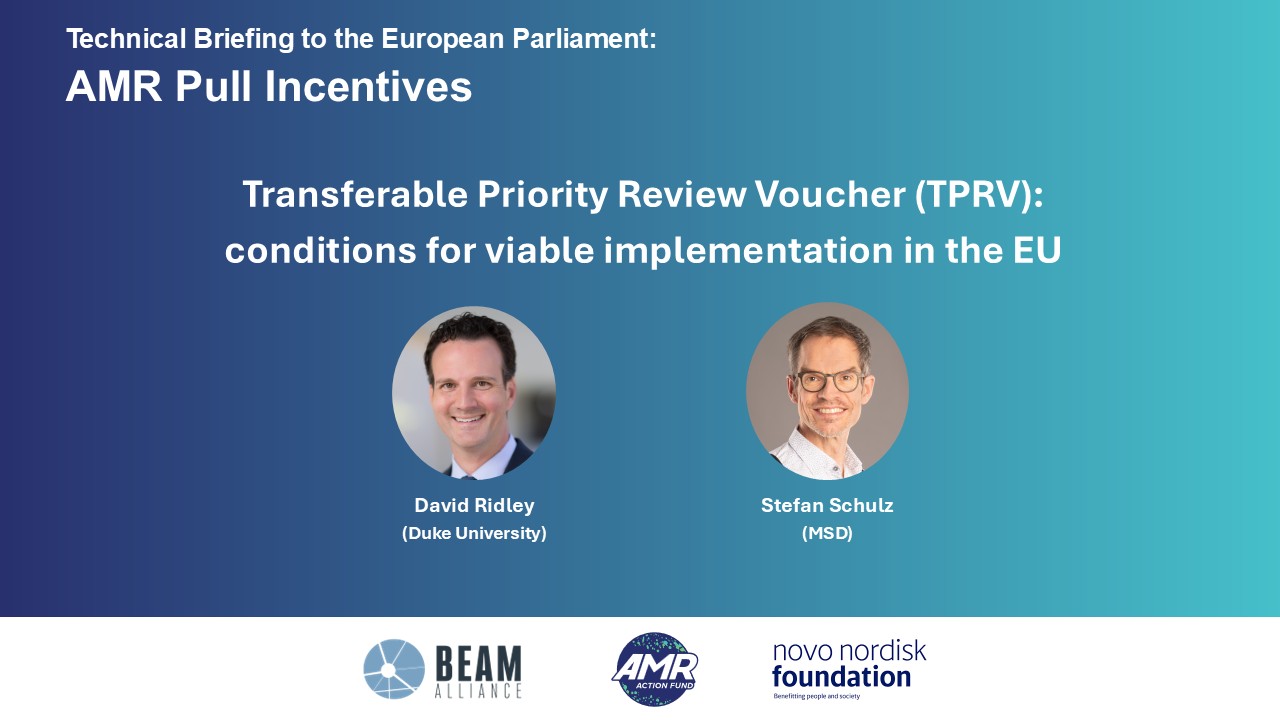Transferable Priority Review Vouchers (TPRVs): Lessons from the US, Implications for EU
- BEAM Alliance


The Transferable Priority Review Voucher (TPRV) was first introduced in the US in 2007 to incentivize the development of treatments for neglected diseases. Since then, over 80 vouchers have been issued, with the program later expanded to include rare paediatric diseases. While the TPRV is not formally part of the current mandates for the EU’s General Pharmaceutical Legislation (GPL) trilogue negotiations, some Members of the European Parliament and Member States have shown interest. In practice, the TPRV could be implemented at the European level as easily as the Transferable Exclusivity Extension Voucher (TEEV).
However, the EU is not the US, and the potential impact of TPRVs in Europe remains uncertain. To better understand this, experts like David Ridley (Duke University) and Stefan Schulz (MSD) have examined the voucher’s real-world incentive effects.
Market Value and Uncertainty
On average, the TPRV are sold nearly $100 million, with possible fluctuations depending on market conditions. In that sense, TPRV carry more risk than TEEV. While a TEEV extends the market exclusivity of an already successful product, a TPRV accelerates the review of a drug with unproven commercial potential. This makes the TPRV’s value less predictable.
Practical Challenges in the EU
- Limited impact on market entry: In the EU, the TPRV would only speed up the EMA review process—which is not the main bottleneck for new drugs. More significant hurdles include national Health Technology Assessments (HTA), pricing negotiations, hospital tenders, and uptake.
- Regulatory resources: If TPRV are widely issued, regulatory agencies may need additional resources to meet accelerated review timelines.
- Overlap with existing incentives: The EU’s PRIME scheme already offers accelerated EMA reviews for the most innovative drugs, reducing the added value of a TPRV for these products.
BEAM’s Takeaways:
- TPRVs have proven beneficial in the US, but the European regulatory environment is very different, likely reducing their value.
- SMEs may have weaker bargaining power when selling a TPRV compared to a TEEV, as the market potential for drugs intended for TEEV use is more readily accessible.
If a choice must be made, TEEV offer a clearer, more reliable incentive for SMEs, making them a more appealing option in the GPL context.
To find out more:
Link to the discussion
Link to BEAM’s PULL incentive overview
Link to David Ridley’s paper

